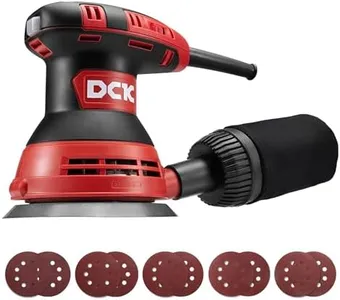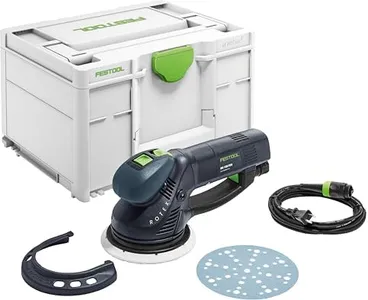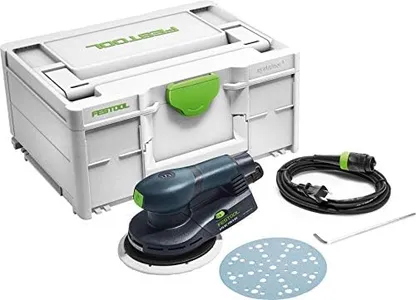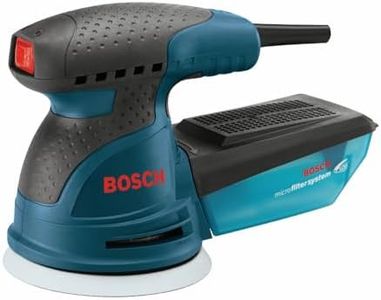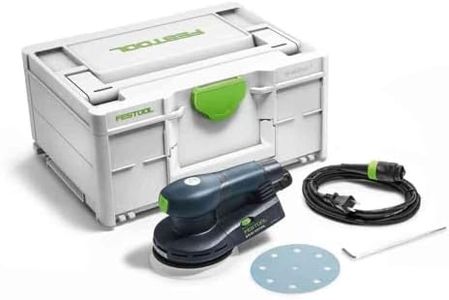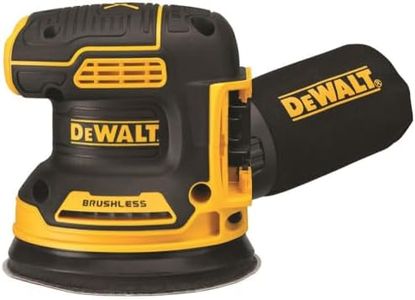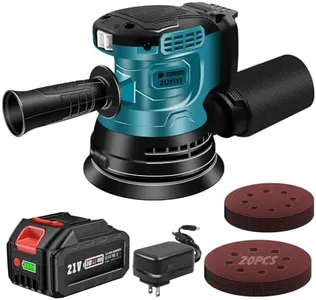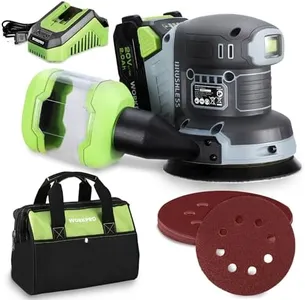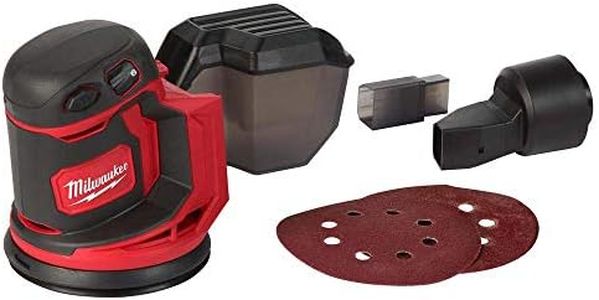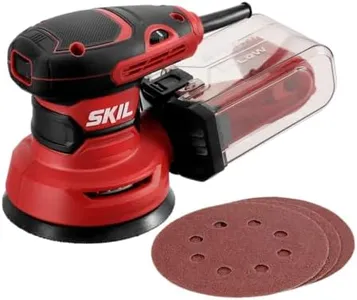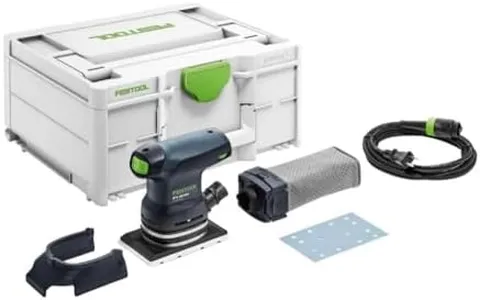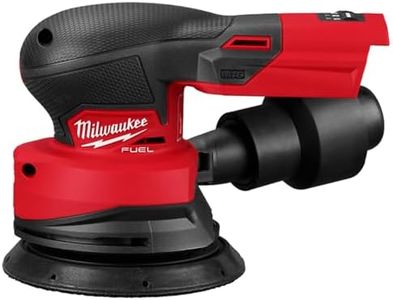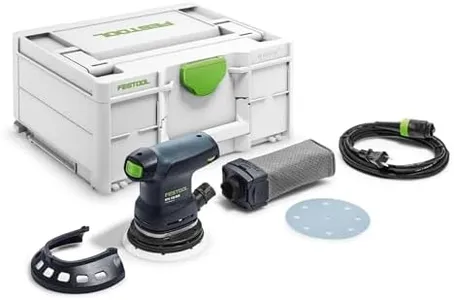10 Best Orbital Sanders 2025 in the United States
Our technology thoroughly searches through the online shopping world, reviewing hundreds of sites. We then process and analyze this information, updating in real-time to bring you the latest top-rated products. This way, you always get the best and most current options available.

Our Top Picks
Winner
Festool 576028 6-Inch Random Orbital Multi-Mode Sander ROTEX RO 150 FEQ-Plus
Most important from
217 reviews
The Festool 576028 Multi-Mode Sander RO 150 FEQ-Plus Sys 3 is a corded electric sander with a 120V power source. The corded design ensures consistent power throughout use, which is great for extensive sanding tasks. It features a FastFix sanding pad system that allows for tool-less pad changes, enhancing user convenience and efficiency. Its eccentric motion supports high-quality, scratch-free surfaces, a valuable feature for achieving professional finishes.
Additionally, the ROTEX rotary motion capability means it can efficiently remove material when needed, combining versatility and power in one tool. Ergonomically, it provides ideal grip positions, making it comfortable for prolonged use. The unit's dimensions suggest a robust build, and the inclusion of the Festool Protector allows sanding up to the edge without damaging the work surface.
Given its features, this sander is likely well-suited for professional woodworkers or serious DIY enthusiasts who need a reliable and versatile tool for both fine finishing and aggressive material removal.
Most important from
217 reviews
Festool 576339 6-Inch Random Orbital Sander ETS EC150/5 EQ-Plus
Most important from
138 reviews
The Festool ETS EC 150/5 EQ-Plus is a corded electric orbital sander designed for those who value precision and a high-quality finish. One of its standout features is the stepless speed pre-selection, allowing you to adjust the orbital speed according to your sanding needs. This versatility, combined with a 3 mm sanding stroke, ensures exceptional surface quality, making it particularly effective for fine sanding as well as coarse and intermediate tasks.
Weighing only 2.5 lbs., it's compact and ergonomic, which reduces fatigue during extended use. The inclusion of vibration and extraction detection technology enhances user comfort and safety, which is a significant plus for anyone working with it for longer periods.
There are a few aspects to consider. While it's perfect for fine work, some users might find it less effective for heavy-duty sanding jobs due to its design focused more on finesse than aggressive material removal. The sander is also corded, which may limit mobility compared to battery-operated models, although this ensures consistent power. Durability is another strong point, thanks to the EC technology and the sanding pad brake that prolongs the tool's life. It comes with a 3-year warranty, offering peace of mind to buyers. Additionally, the included Systainer3 storage solution is a thoughtful touch, making transport and organization easier.
Most important from
138 reviews
Bosch ROS20VSK 5 In. Palm Random Orbit Sander/Polisher
Most important from
5742 reviews
The Bosch ROS20VSK 5-Inch Palm Random Orbit Sander is a corded electric tool known for its strong motor and reliable performance. With a power supply of 120 volts and a variable speed range between 7,500 and 12,000 OPM (orbits per minute), it gives you good control to match different sanding tasks, from rough to fine finishes. The 5-inch pad size is standard and works well for most small to medium projects, making it versatile enough for furniture, cabinetry, or DIY woodworking. Bosch includes features like a microcellular backing pad and an integral pad dampening system, which help reduce swirl marks and deliver a smooth finish — a plus if you care about the quality of your work.
Dust collection is handled efficiently with an on-board filtering system and a vacuum hose adapter, which keeps the workspace cleaner and reduces airborne dust, improving comfort and safety. In terms of ergonomics, the sander is lightweight (about 3.5 pounds) and has a soft-grip design that minimizes vibration, making it comfortable to hold during longer jobs. The tool comes with a carrying case for convenience and uses widely available hook-and-loop sanding discs, so finding replacements is easy.
One minor downside is that being corded limits portability compared to battery-powered models, and the 5-inch pad might be small for very large surfaces, requiring more time to sand. Also, while it’s durable and backed by a one-year manufacturer warranty, the tool’s release date from 2004 means it lacks some of the newer features found in modern sanders. For users seeking a high-quality, affordable sander with good dust control and ergonomic comfort, the Bosch ROS20VSK is a strong contender.
Most important from
5742 reviews
Buying Guide for the Best Orbital Sanders
Choosing the right orbital sander can make a significant difference in the quality and efficiency of your sanding projects. Orbital sanders are versatile tools used for smoothing and finishing surfaces, and they come in various types and sizes. To find the best fit for your needs, it's important to understand the key specifications and how they impact performance. Here are the main specs to consider when selecting an orbital sander.FAQ
Most Popular Categories Right Now
